 
 Main Menu
Main Menu
|
 Nevada Classics
Nevada Classics
|
 Advertise at CC
Advertise at CC
|
 February 2025
February 2025
|
| S |
M |
T |
W |
T |
F |
S |
| |
|
|
|
|
|
1 |
| 2 |
3 |
4 |
5 |
6 |
7 |
8 |
| 9 |
10 |
11 |
12 |
13 |
14 |
15 |
| 16 |
17 |
18 |
19 |
20 |
21 |
22 |
| 23 |
24 |
25 |
26 |
27 |
28 |
|
|
 CC Advertisers
CC Advertisers
|
|

04-24-2010, 10:20 PM
|
 |
Senior Club Cobra Member

|
|
|
Join Date: Feb 2007
Cobra Make, Engine: KMP 539, a Ton of Aluminum
Posts: 9,592
|
|

 Not Ranked
Not Ranked
 Rebuttal of the "Less Stroke/Cubes=Rev Faster" Argument
Rebuttal of the "Less Stroke/Cubes=Rev Faster" Argument
Is it? I remember reading that there some who build a 445 or a 468 for the 4.125 stroke. Well, this response to a thread was posted today by noted and published FE guru Jay Brown over on the FE Forum:
"I personally don't believe the BS about big cubic inches don't rev. My 585" SOHC, with a 4.6" stroke and 4.5" bore, regularly bangs off the rev limiter at 7500 on the track. My shift light is set at 6700, but last year I was hitting the rev limiter in first before I could shift nearly every time, and sometimes in second too. The engine revs faster than any smaller engine I've ever had.
A big stroke will cause you more frictional torque and power losses than a small stroke. Given the same number of cubic inches, a smaller stroke bigger bore engine will make more power, especially at the top end. But if not class limited to some cubic inch displacement, I will take a 482" 427 stroker over a standard 427" engine every time. The extra cubic inches translate to lots more torque and horsepower. Look at NHRA pro-stock vs. the larger cube IHRA pro-stock cars. The IHRA cars are faster by 3-4 tenths, and down in the six second range that's a lot.
It sounds like you have a street car, so maybe my little diatribe doesn't apply to you. But especially with a street car, cubic inches are king. Put in the 4.375" stroke crank, and have fun."
Here's the entire thread: http://www.network54.com/Forum/74182...k%2C+now+what-
Thought provoking?

|
-
Advertising


04-24-2010, 11:43 PM
|
 |
CC Member

|
|
|
Join Date: Mar 2005
Location: Santa Cruz,
ca
Cobra Make, Engine: Shelby CSX4788 with a Dawkins performance 490 ci iron genesis block hydrualic roller
Posts: 246
|
|

 Not Ranked
Not Ranked
 490 CI over square fe
490 CI over square fe
Looking at all the initial posts helps to confirm why I went with large bore x short stroke motor for my cobra. Most of the long rod / long stroke stroker fe's out there are aimed at the heavy car set (galaxies, thunderbolts ....). VERY few people will ever be able to use all the big block torque down low in a light car like a cobra because we just can't hook it up. I am very lucky to have a local engine builder locally who sat down and discussed what my goals were. My background is road racing a fox body mustang that weighs about the same as my cobra (2,600#). I stared with a high CR 306 solid lifter with a 7,500 and moved to a lower CR hydraulic roller 342 that put out 370 ft # and 360 rwhp with a 6,000 red line. The added torque was great, but the longer rod and stroke caused increased side load = increased wear and frictional loss. Race motors are like most cobra motors - relatively low miles / year, but race motors are run hard A LOT of their life. If you are really using more than about 400 - 450 hp in a cobra, you are either crazy, live in a place with exceptional roads, no traffic and few cops or are driving it on the track- IMHO. That is my limited knowledge slant on strokers - YMMV.
John(;-)
__________________
Racing, bull fighting and mountain climbing are the only true sports, everything else is just a game. - Hemmingway
|

04-25-2010, 05:19 AM
|
|
CC Member

|
|
|
Join Date: Dec 2001
Location: Louisville,
KY
Cobra Make, Engine: I'm Cobra-less!
Posts: 9,417
|
|

 Not Ranked
Not Ranked

My thoughts are build the biggest your budget will allow. The more cubes you have, the more horsepower you make. The longer stroke you have, the more torque you're going to put down. I don't worry about numbers and always try to push my customers that way. Some are dead set on having 427 cubic inches, I'd rather throw a BIG crank in there and get more.
As for longer strokes, if you use light pistons and light rods, they will rev. Maybe not instantaneously like a 12.5:1 Cup engine, but they'll rev and rev quick.
A lot of guys feel the need to use H-beam rods in a 500-600 hp engine, but the forged I-beams with the big bolts work just fine and are a ton lighter than an H-beam. A lot of it also has to do with the cam, compression, and cam timing.
I aim for as much power as you can reliably put down in a street car. Guys always seem to come back wanting more a year down the road. Might as well go for broke the first time. That's why cars have gas pedals, you don't have to hold them wide open all the time.
Last edited by blykins; 04-25-2010 at 05:22 AM..
|

04-25-2010, 06:06 AM
|
 |
CC Member

|
|
|
Join Date: Oct 2002
Location: Eagle,
Ne.
Cobra Make, Engine: 1966 Lone Star 427SC.
Posts: 4,310
|
|

 Not Ranked
Not Ranked
I agree Brent. More cubes = more power. Like mentioned, the NHRA, especially with the IHRA, the "mountain motors" rule.
This is unreal. A sprint car team up in Pa. built a billet,......aluminum block & heads in the outlaw class, and it has 820 cubes and 1,050 HP. ! 
I don't recall the bore & stroke but, it's massive. They ended up outlawing this engine.
With my new side oiler motor, I can't decide with either 482 cu. or 496 ?
Everyone seems to using the 482, and I want something different without going too wild.
At first, I thought about 527 cu. but, I don't want to max out the cylinder walls being too thin, making more heat and and not being able to rebuild without adding sleeves.
Another point, which I may get some come backs, (and don't care)  but it's also a matter of fuel mileage. It would take out all the fun of driving , if I only get 8 mpg. Got tired of my Pro-Street Camaro, only getting 6 mpg.
More cubes = more gas. 
__________________
Regards,
Kevin
|

04-25-2010, 06:08 AM
|
 |
CC Member

|
|
|
Join Date: May 2000
Location: Northern VA,
VA
Cobra Make, Engine: Classic Roadsters
Posts: 2,765
|
|

 Not Ranked
Not Ranked
It is not "will it rev" it's "how fast do the revs come up". To use general / rounded numbers, a windsor crank weighs 75 lbs, an FE crank weighs 125 lbs. The rods and pistons are also much heavier. Thus the ability to spool up quickly is limited kind of like the aluminum vs iron flywheel physics. The ability to rev QUICKLY due to less internal parasitic loss due to weight = HP to the wheels.
Sure if you want to wait 15 minutes for it to hit 7500 rpm, it will get there.
.
__________________
LIFE IS TOO SHORT TO WORRY ABOUT GOOD GAS MILEAGE
________
Utinam logica falsa tuam philosophiam totam suffodiant!
________
Last edited by CobraEd; 04-25-2010 at 06:25 AM..
|

04-25-2010, 06:22 AM
|
 |
CC Member

|
|
|
Join Date: Oct 2002
Location: Eagle,
Ne.
Cobra Make, Engine: 1966 Lone Star 427SC.
Posts: 4,310
|
|

 Not Ranked
Not Ranked
With my fairly mild 428 FE, I was amazed,..... just how fast the 5,500 rpm came up. I had a Tremec 3550 and 9" with 350 (it may be 370) gears. 1st gear was really too low. As soon as I let the clutch out quickly, is was almost immediately,.... into 2nd. But, it's still fun anyway.
COBRA'S ROCK ! 
__________________
Regards,
Kevin
|

04-25-2010, 06:27 AM
|
 |
CC Member

|
|
|
Join Date: May 2000
Location: Northern VA,
VA
Cobra Make, Engine: Classic Roadsters
Posts: 2,765
|
|

 Not Ranked
Not Ranked
For the reasons I stated above, I think the engine masters competition guys all use large displacement small block engines vs older big block engines. I am not 100% sure though.
.
__________________
LIFE IS TOO SHORT TO WORRY ABOUT GOOD GAS MILEAGE
________
Utinam logica falsa tuam philosophiam totam suffodiant!
________
|

04-25-2010, 06:37 AM
|
 |
CC Member

|
|
|
Join Date: Oct 2002
Location: Eagle,
Ne.
Cobra Make, Engine: 1966 Lone Star 427SC.
Posts: 4,310
|
|

 Not Ranked
Not Ranked
They've both been used.
Personally, I will never have a small block, unless I built a FIA Cobra, but it's way easier to work on or remove/install than a big boat anchor FE. I was reminded just yesterday ! 
The 427 small block with it's big bore/stroke, is one hell of an engine putting down 500 + HP/TQ.
__________________
Regards,
Kevin
|

04-25-2010, 07:24 AM
|
|
CC Member

|
|
|
Join Date: Mar 2001
Location: E BRUNSWICK N.J. USA,
Posts: 3,841
|
|

 Not Ranked
Not Ranked
 Here we go again
Here we go again
Rodknock Jay Brown is one for the front runners for helping the FE motor return to being a challenger for top motor ever built. There is a BIG different between a SOHC HEAD Motor and a TP,MR,HR, motor. Valve train alone with worth about 1000-1,500 rpms more than a pushrod motor. I hate when Jay does this apples to oranges stuff.
IMO the only reason a big bore short stroke revs up faster is WEIGHT. Also the fact of the Valves have a little more room around them for intake and exhaust flow. This motor will make a little more power.
If you want high rpm's and high HP you go with a BB/SS motor. If you are looking for a large torque band, a square motor or longer stroker works better. Advancing or retarding the camshaft will also move around the power bands.
Any way you can lighten the rotating assembly is going to give you a quicker revving motor. Any way you can lighten the valve train the motor is going to rev up quicker.
There are a couple of guys out here that are running small bore long stroke motors. They make large power and rev to 7,000 rpms with any problems.
If money was no issue and you wanted a 527 motor to turn 8,000 rpms, lighten up the crank shaft, aluminum rods or titanium ones, run even honda ones if needed. Rifle drill the crank and cut down the weights on it. Balancing will be very critical. Here is the best of both worlds. SB weight of rotating assembly in a BB motor. Lighten up the valve train, Small stem valves, titanium on the intake side, Coated ones on the exhaust. Lighten up rocker arms and pushrods. Go to a larger pushrod diameter, thin wall and have smaller ends. Life on this motor is about 75-100 hours before issues.
Build a torque motor either square or under bore size. make the drive train setup for this power band and you have a motor with a little less power and will last 3 times longer and run easier overall.
My cobra weight is 2705 with 1/2 tank of gas. The 500+ ft of torque is great. Having a 6,200 max rpm also saves the motor in the long run. I can either lightup the 17" 335 tires at will or roll on the throttle and have great accelleration. Suspension also has alot to do with ANY cobra and how it handles both road and power train wise.
I'm building a 498 motor that is under squared, another 80+ft of torque more and about 65 hp over the 482 I have in the car now. Adjustment will need to be redone again with driving and suspension to make is all work togeather. Rick l.

|

04-25-2010, 11:25 AM
|
|
CC Member

|
|
|
Join Date: Nov 2009
Location: Voerde,
NRW
Cobra Make, Engine:
Posts: 13
|
|

 Not Ranked
Not Ranked
Quote:
|
Originally Posted by blykins
A lot of guys feel the need to use H-beam rods in a 500-600 hp engine, but the forged I-beams with the big bolts work just fine and are a ton lighter than an H-beam.
|
Scat and Eagle 6.700" H-Beam rods weighs near the same as their I-Beams, difference max. 20g.
Which forged I-Beams are so light? |

04-25-2010, 11:30 AM
|
 |
CC Member

|
|
|
Join Date: Oct 1999
Location: Prosper,
TX
Cobra Make, Engine: CAV GT40 #169, Ford 408 Stroker & ZF Transaxle
Posts: 2,408
|
|

 Not Ranked
Not Ranked
Interesting reading........I'm going to be building a FE shortly getting a Cobra (roller) in May, and been thinking about a 496 FE with solid roller. I've had 6 Cobras and all small blocks but one which was a 514 Ford crate engine. The solid roller in the 514 motor did let it rev pretty good but I have always loved the high rev HP of the big small blocks and would like the FE to do the same. Keith Craft is going to do my engine so I guess I'll have some more discussion with him on this subject but the last small block he built for me was a 351/427 that was awesome. I do have several Cobra buddies here in Dallas with Keith's 482 and 1 with a 496 and they are awesome motors but all hyd roller engines.
__________________
Gary
CAV GT40
|

04-25-2010, 11:37 AM
|
|
CC Member

|
|
|
Join Date: Dec 2001
Location: Louisville,
KY
Cobra Make, Engine: I'm Cobra-less!
Posts: 9,417
|
|

 Not Ranked
Not Ranked
Quote:
Originally Posted by silverline

Scat and Eagle 6.700" H-Beam rods weighs near the same as their I-Beams, difference max. 20g.
Which forged I-Beams are so light?
|
I was thinking of the SBF rods when I made that statement. There's 65-75g between I and H beam rods there. That's a good bit, especially when you pair it up with a light/heavy piston. 100g is about a 1/4 lb.
I don't have any BBC I/H beams here or I'd weigh a set. |

04-25-2010, 11:44 AM
|
 |
CC Member

|
|
|
Join Date: Jul 2005
Location: Bartlett,
Ill
Cobra Make, Engine: Everett-Morrison LS1
Posts: 2,448
|
|

 Not Ranked
Not Ranked
I've never seen a 125 lb FE crank
|

04-25-2010, 11:45 AM
|
|
CC Member

|
|
|
Join Date: Dec 2001
Location: Louisville,
KY
Cobra Make, Engine: I'm Cobra-less!
Posts: 9,417
|
|

 Not Ranked
Not Ranked
Neither have I, but if you read his post, he said that he's using those numbers as a general comparison......SBF is a little lighter than an FE.
|

04-25-2010, 01:46 PM
|
 |
CC Member

|
|
|
Join Date: Jul 2005
Location: Bartlett,
Ill
Cobra Make, Engine: Everett-Morrison LS1
Posts: 2,448
|
|

 Not Ranked
Not Ranked
You can't do comparisons unless you use numbers that represent what you are comparing.
FE cranks don't weigh 125 lbs, not only that but Windsor cranks don't weigh 75 lbs either
|

04-25-2010, 03:41 PM
|
 |
Senior Club Cobra Member

|
|
|
Join Date: Feb 2007
Cobra Make, Engine: KMP 539, a Ton of Aluminum
Posts: 9,592
|
|

 Not Ranked
Not Ranked
Rick, all I would say is that most mortals, not Jay Brown, not you, not a few others, but mortals like me or Patrick, cannot tell the difference between a 468 (4.125" stroke) or 482 (4.25" stroke), as an example.
Also, I think Jay is making a much more global point, not just limited to his 585ci SOHC engine.
Just my opinion, but I think the everyday Joe or Jane Six-Pack is kidding him or herself, if they say they can feel the engine with the 4.125" stroke revving faster than the one with the 4.25" stroke.
I call BS on most. Jay has built plenty of non-SOHC engines too.
|

04-25-2010, 04:24 PM
|
 |
CC Member

|
|
|
Join Date: May 2000
Location: Northern VA,
VA
Cobra Make, Engine: Classic Roadsters
Posts: 2,765
|
|

 Not Ranked
Not Ranked
I couldn't remember the actual weights, but my ratio was correct. Below are just two of the many links showing 47lbs for a Windsor and 73lbs for an FE.
http://www.campbellenterprises.com/f...oker-crank.php
http://tampa.craigslist.org/hil/pts/1706037810.html
So, . . there are some actual weights !!! 
.
__________________
LIFE IS TOO SHORT TO WORRY ABOUT GOOD GAS MILEAGE
________
Utinam logica falsa tuam philosophiam totam suffodiant!
________
|

04-25-2010, 04:26 PM
|
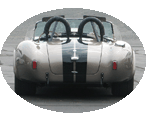 |
Half-Ass Member

|
|
|
Join Date: Jun 2005
Cobra Make, Engine: ERA #732, 428FE (447 CID), TKO600, Solid Flat Tappet Cam, Tons of Aluminum
Posts: 22,017
|
|

 Not Ranked
Not Ranked

Quote:
Originally Posted by RodKnock

Rick, all I would say is that most mortals, not Jay Brown, not you, not a few others, but mortals like me or Patrick, cannot tell the difference between a 468 (4.125" stroke) or 482 (4.25" stroke), as an example.
Also, I think Jay is making a much more global point, not just limited to his 585ci SOHC engine.
Just my opinion, but I think the everyday Joe or Jane Six-Pack is kidding him or herself, if they say they can feel the engine with the 4.125" stroke revving faster than the one with the 4.25" stroke.
I call BS on most. Jay has built plenty of non-SOHC engines too.
|
I think that's pretty accurate. I have the shorter stroke 4.125" crank. I can't hit WOT much at all, and when I do, only for very brief durations and being extra careful to avoid wheelspin. It hits red line awfully fast, even on half throttle. I don't think another 35 cubic inches would make much of a difference one way or another -- and I doubt I would notice it anyway. Mostly, when I'm driving I'm usually wondering what's trying to rattle itself loose and leave me stranded out in the middle of nowhere.
Last edited by patrickt; 04-25-2010 at 04:29 PM..
Reason: typo
|

04-25-2010, 04:34 PM
|
 |
CC Member

|
|
|
Join Date: May 2000
Location: Northern VA,
VA
Cobra Make, Engine: Classic Roadsters
Posts: 2,765
|
|

 Not Ranked
Not Ranked
Hmmmm. Seems I posted this twice. I thought the first one was lost.
I couldn't remember the actual weights as I stated initially, but my ratio was correct. A forged (heavier than stock) Windsor crank weighs 47 lbs and a stock cast FE crank weighs 73 lbs.
http://www.campbellenterprises.com/f...oker-crank.php
http://tampa.craigslist.org/hil/pts/1706037810.html
Samer weight ratio, my point remains! 
.
__________________
LIFE IS TOO SHORT TO WORRY ABOUT GOOD GAS MILEAGE
________
Utinam logica falsa tuam philosophiam totam suffodiant!
________
Last edited by CobraEd; 04-25-2010 at 04:48 PM..
|

04-25-2010, 05:09 PM
|
 |
CC Member

|
|
|
Join Date: Jul 2005
Location: Bartlett,
Ill
Cobra Make, Engine: Everett-Morrison LS1
Posts: 2,448
|
|

 Not Ranked
Not Ranked
straight weight ratios have nothing to do with this subject----It more depends on what radius the mass is accelerating---a mass at 4 inch isn't the same as a mass at 3 inches--
I will start weighing cranks as I do them and post some weights--I'm too busy to go back and sort thru my records to get the weights of various cranks
The weight of the rotating mass will have more feelable effect on clutch engagement and deceleration for corners and sync ing of engine and trans on gear changes than will be feelable on just straight acceleration.
But thanks for the idea of getting specs from Craigs List as the next time I need some bearing clearance or rod/main bore specs I'l have a new place to research---I bet Kieth and Barry are glad to find out about them also
|
 Posting Rules
Posting Rules
|
You may not post new threads
You may not post replies
You may not post attachments
You may not edit your posts
HTML code is Off
|
|
|
All times are GMT -7. The time now is 02:16 PM.
|




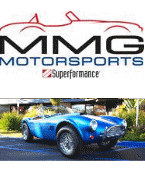


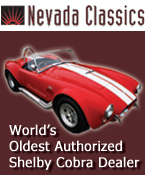
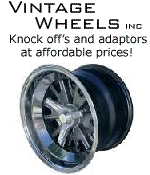
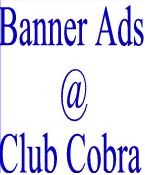


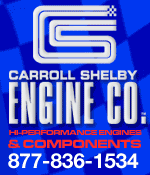







 but it's also a matter of fuel mileage. It would take out all the fun of driving , if I only get 8 mpg. Got tired of my Pro-Street Camaro, only getting 6 mpg.
but it's also a matter of fuel mileage. It would take out all the fun of driving , if I only get 8 mpg. Got tired of my Pro-Street Camaro, only getting 6 mpg.



 Linear Mode
Linear Mode



